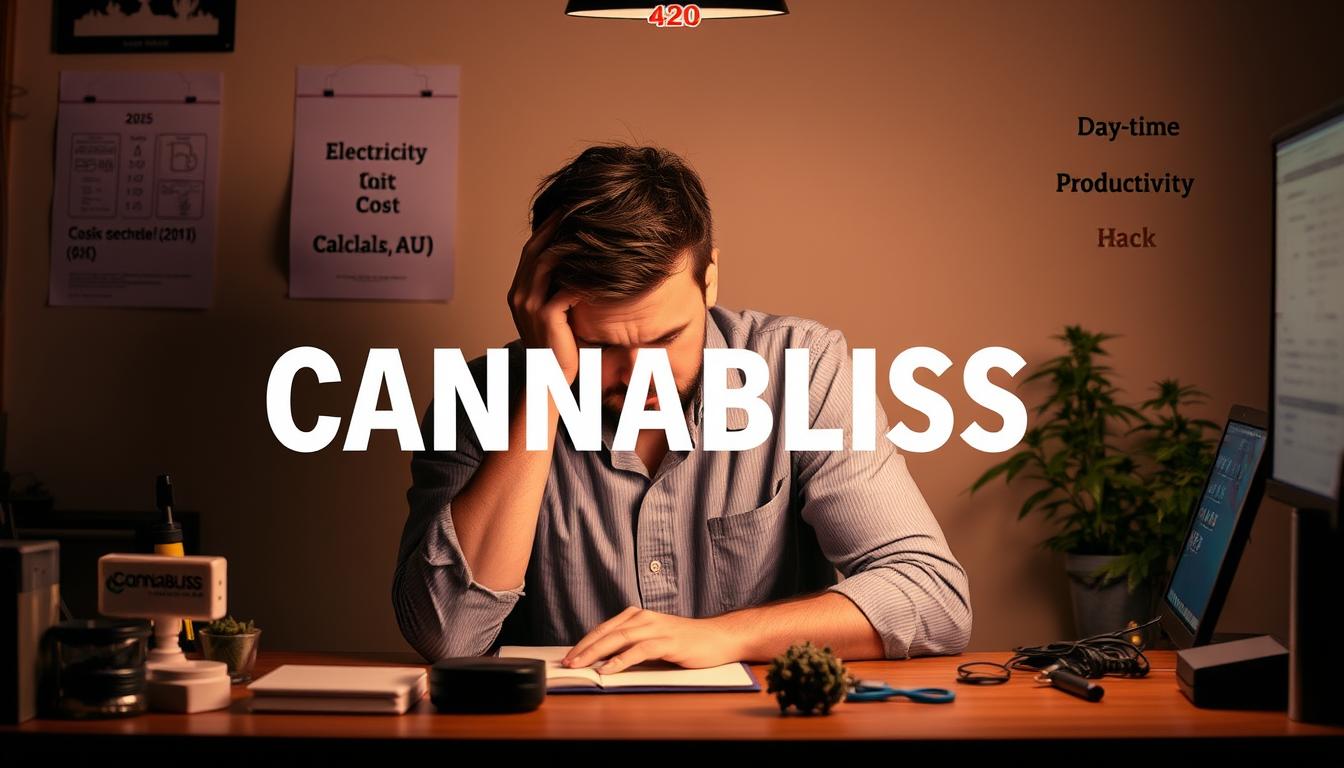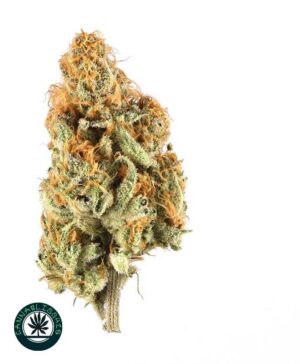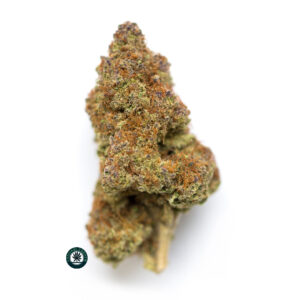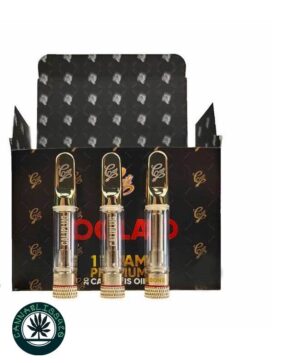Green Crack is a lively, daytime-friendly sativa-leaning cultivar that blends classic Skunk #1 vigour with Afghani robustness.

Reported THC typically sits in the mid-teens to low twenties, with very low CBD and modest CBG. Growers praise its citrus and tropical-mango terpene profile, often backed by earthy, skunky notes.
Users and reviewers often cite a fast-onset cerebral lift that supports focus, creativity and an upbeat mood. That makes this strain popular in the Australian market for daytime use, study sessions and active weekends.
For growers, key points are warmth, strong airflow and humidity control, plus training methods like SoG or ScrOG to manage height and boost yields. Seeds are available from reputable international banks, but Australian buyers should check legal and import rules.
Key Takeaways
- Known by the name “Green Crack” (also called Green Crush or Mango Crack) for its tropical-citrus flavour.
- Typical potency: mid-teens to low-20s % THC; low CBD.
- Effect: fast, focused cerebral lift—good for daytime tasks and creativity.
- Grow tips: warm temps, good airflow, low humidity in flower; SoG/ScrOG useful.
- Users’ reviews vary by batch; choose trusted breeders for stable phenotypes.
What is Green Crack
Green Crack began in the early 1990s as a cross between Skunk #1 and an Afghani landrace. That mix gives clear lineage and a lively, daytime-friendly feel.
The genetics create a roughly 65% sativa / 35% indica profile. This sativa-dominant hybrid leans cerebral and energising while the Afghani parent adds bud density and resin.
Why the nicknames exist
The common name Green Crush or Mango Crack reflects its tropical-mango terpene notes and skunky-citrus aroma. Fans use these tags to highlight flavour nuances.
Rise to popularity
Medical users in the 1990s prized it for productivity and mood uplift. Word spread as recreational users and reviewers praised its reliable, bright daytime performance.
| Feature | Origin | Profile |
|---|---|---|
| Lineage | Skunk #1 × Afghani | 65% sativa / 35% indica |
| Flavour | Mango, citrus, skunk | Uplifting, clear-headed |
| Use in Australia | Daytime study & creativity | Popular classic hybrid choice |
green crack effects & THC content
Users report a lively, daytime-centred experience that pairs mental clarity with a motivating buzz. This section summarises typical cannabinoid ranges and what to expect from the effects, plus possible downsides and the chemistry behind the flavour.

Daytime-friendly uplift, focus, creativity and energy
The common experience is energising, uplifting and focused. Many find it ideal for errands, creative work or meetings because the euphoria feels clean and sparky rather than heavy.
Reported THC content sits roughly between 13–21% (sometimes higher). That range affects onset and intensity, and terpene synergy can make lower numbers feel more potent.
Potential side effects including dry mouth, dry eyes, anxiety and paranoia
Adverse effects include dry mouth and dry eyes; sip water and have snacks ready. Some users, especially those prone to stimulatory responses, report anxiety, brief paranoia or racing thoughts.
If you worry about mood effects like anxiety or depression triggers, start with a small dose and test in a calm setting.
Terpenes and flavonoids driving citrus, mango and skunky notes
Pinene often gives a piney, clear-headed lift. Myrcene and beta-caryophyllene add mango and earthy depth. Flavonoids such as quercetin and luteolin may add citrus brightness and subtle astringency.
“Dry-herb vaping tends to highlight citrus-mango notes and a tidy, functional high; combusting can be punchier with a faster onset.”
- Expectations: crisp, daytime ride with motivation and focus.
- Form factor: vape = cleaner flavour; smoke = faster, fuller onset.
- Tips: hydrate, dose low initially, and use in productive settings.
Medicinal applications and who it may suit in Australia
Many Australian patients pick this sativa-leaning cultivar for a bright, motivating lift that can ease low mood and daily stress while helping with mild fatigue.

Stress, fatigue and low mood support with uplifting euphoria
Users often report clearer thinking and a buoyant mood that helps break cycles of low energy or mild depression. This makes the strain useful for short-term relief and activity encouragement.
Considerations for anxiety, ADHD and motivation
Anecdotal reports show improved focus for some attention-related conditions, including ADHD. Start low: overstimulation and anxiety can occur, so small doses and a calm setting help.
Pain, nausea and inflammation relief potential
Some patients report reduced pain and inflammation and occasional anti-nausea benefits. Results vary by person and chemotype, so consult a clinician for ongoing conditions.
Potency awareness and dosing mindfulness for new users
Begin with one or two small inhalations and wait 10–15 minutes to judge effects. Keep a simple diary of dose, time and method to refine results safely.
“Set and setting matter: a familiar, quiet space lowers anxiety and channels uplift into productive tasks.”
Growing Green Crack in Australia
Aim for warm, stable days and steady airflow to bring out the best citrus aroma and lively sativa character. This cultivar prefers sunny, long seasons and benefits from careful humidity and feed control.

Best climates and regions
Australian growers do well in warmer coastal or inland zones with long, bright seasons. Greenhouses help in cooler states and protect against shoulder-season rain.
Indoor tips: environment and sensitivity
Keep daytime temps around 21–32°C. Aim for ~50% RH in veg and ~30% in flower. Use strong circulation and intake filters to prevent mould.
Training and height control
SoG can boost yields per square metre, while ScrOG and topping control stretch for this sativa-leaning runner. Expect heights of 3–9 ft without training.
Nutrients, watering and harvest cues
Start light with feed; raise phosphorus before and into early flowering. Avoid over-watering and watch trichomes—mostly cloudy with some amber—around 8–9 weeks for harvest timing.
- Yields: typical indoor runs ~8 oz per square metre; SoG can reach ~18 oz per square metre. Outdoors, well-sited plants may hit ~16–20 oz per plant.
- Drying & curing: slow dry at ~18–20°C and 55–60% RH to protect the citrus-forward aroma.
“Good airflow and consistent irrigation are the simplest defenses against mould and bud rot.”
Note: phenotypes vary; select cuts that suit your room and follow local laws and security best practice when you grow.
Buying Green Crack seeds in Australia
Buying seeds in Australia requires care. Laws, shipping options and breeder transparency all matter. Take time to compare listings before you buy.

Availability — reputable international banks such as Dutch Passion and Nirvana Seeds often list this strain as feminised seed. Many offers include clear notes on flowering time (commonly ~8–9 weeks), expected plant size and terpene tendencies like citrus, mango and skunk.
Market considerations and reputable sourcing
People should prioritise breeders with good germination guarantees and transparent lineage. Check customer reviews and germination policies before ordering. Choose stealth shipping from vendors with a solid track record to reduce import risk.
Selecting phenotypes and sativa-dominant expressions
Sativa-leaning expressions stretch more and may finish slightly quicker than some hazes. Some phenotypes lean stockier and earthier from the Afghani side.
- Compare flowering times, terpene profiles and height to match your space.
- Read independent grow diaries to judge stability and vigour across crack phenotypes.
- Choose feminised seed for simplicity; use regulars only if you plan to select a mother plant.
- Handle seeds carefully: order in cooler months for hot regions and store in a cool, dark, dry place.
“Target phenotypes with balanced resin levels and the trademark bright terpene drive for the best daytime experience.”
Aroma, flavour and bud appearance
Expect a lively scent profile—sharp lemon and tropical mango notes sit atop an earthy base. The first draw greets you with a bright citrus hit, then eases into sweet, ripe mango and mild skunky warmth.

Citrus, tropical mango and earthy-skunk bouquet
Aroma is crisp and vivid, with lemon-lime lift leading the way. A second wave of tropical sweetness follows, balanced by subtle earth and classic skunk depth.
A good cure brings forward the fruit and smooths harsh edges. Well-cured flower often tastes rounder and sweeter on the exhale.
Bud structure, trichome coverage and bag appeal
Typical buds are dense and light green with bright orange pistils. A frost of trichomes gives strong bag appeal and a sticky feel.
Phenotypes vary: some lean pine-skunk and sharper, others deliver softer, fruitier notes—especially when vaped at lower temps.
- Vape temps: low = mango-sweet, mid = citrus-forward, high = fuller, pungent profile.
- Grind: well-grown material grinds fluffy and fills the room with a pungent, fresh plume.
- Store: keep jars cool and dark to preserve aroma and avoid terpene loss.
“A careful cure and good storage unlocks the strain’s full flavour—ripe mango and sweet-earth linger after each draw.”
User reviews and comparable strains
Many reviewers across Australia cite a crisp, motivating buzz that eases into steady clarity. This summary gathers common reports and useful comparisons to help you pick the right option for a productive day.

What Australian and global users say
Users often report an energising, focused and creative high. The typical experience is a brisk, happy lift that supports tasks without heavy sedation.
Some reviews note a mellowing body tingle when anxiety is present. Batch quality matters: well-cured lots last longer, while dry growers’ runs can feel short and uneven.
When to try other classic sativas
Choose Super Silver Haze if you want a spicier, more cerebral haze with deeper headspace. Pick Sour Diesel for a punchier, diesel-forward kick that speeds motivation.
Consumption methods and feel
Dry herb vapes highlight fruity-floral layers and deliver a steady, functional clarity. Bongs and pipes hit faster and bring a sharper skunky edge.
On busy schedules, a few pulls on a vape or a single small bowl often gives enough lift without overdoing it.
| Aspect | Typical effect | Best use |
|---|---|---|
| Green Crack | Uplift, focus, fruity notes | Daytime work, creativity |
| Super Silver Haze | Cerebral depth, spicy haze | Long creative sessions |
| Sour Diesel | Fast, pungent, motivating | Quick energy boost, errands |
“Skim multiple reviews and match reports to your routine before choosing a strain.”
Conclusion
strong, Green Crack is a modern classic strain that pairs a bright citrus‑mango aroma with lively, focused effects. It flowers predictably in about 8–9 weeks and rewards careful growers with strong yields both indoors and outdoors.
For users, the immediate benefits are motivating energy, creative spark and clear euphoria, with some relief reported for stress, fatigue and mild pain. Be mindful of potency and take small doses to reduce anxiety risk.
For cultivators, expect good response to SoG or ScrOG training, steady feeding and warm, sunny conditions. Buy seed from reputable breeders to match the flavour and performance you want, and store cured buds well to preserve that signature aroma.
If you want a different twist, try Sour Diesel or Super Silver Haze for alternate sativa-led rides. Choose timing, setting and dose to match your goals and tolerance.
FAQ
What is Green Crack and where did it come from?
This sativa-dominant hybrid traces its genetics to Skunk #1 crossed with Afghani. It developed a reputation for energetic, daytime effects and rose to prominence through club and coffee-shop culture before becoming a global favourite among consumers seeking focus and uplift.
Why does this strain have nicknames like Green Crush or Mango Crack?
Nicknames reflect flavour and effect — some phenotypes display strong tropical mango and citrus notes, while others deliver a sharp, stimulating high. Regional growers and users often coin informal names to highlight distinct aroma or potency variations.
What kind of high can users expect and how strong is the THC content?
Expect an uplifting, focused high that boosts energy and creativity. Typical THC levels vary by phenotype and cultivation but often sit in the mid-to-high range, so newcomers should start low and go slow to gauge tolerance.
What common side effects should users be aware of?
Dry mouth and dry eyes are the most common. In higher doses, some people report increased anxiety or paranoia. Keeping hydrated, dosing conservatively and using calming terpenes can reduce unwanted effects.
Which terpenes drive the aroma and flavour profile?
Citrus and tropical notes usually come from limonene and myrcene, while skunky, earthy tones relate to caryophyllene and humulene. These compounds combine to create a bright, zesty bouquet with sweet mango undertones.
Who might benefit from this strain medicinally in Australia?
Its energising, mood-lifting properties may help people managing stress, daytime fatigue and low mood. Some patients report improved focus that can aid ADHD symptoms, though clinical guidance is recommended.
Are there drawbacks for people with anxiety or certain conditions?
Yes. The stimulating effects can worsen anxiety or trigger racing thoughts in susceptible individuals. Those with severe anxiety or psychosis history should avoid or consult a clinician before use.
Can it help with pain, nausea or inflammation?
Some users find relief from mild pain, nausea and inflammation, but more sedating indica hybrids often better suit chronic pain. Symptom response varies, so try small doses and track outcomes.
How should new users approach dosing and potency?
Start with a small dose and wait at least 20–30 minutes when inhaling, longer with edibles. Keep sessions short and note effects. Gradually increase only if needed to avoid anxiety or overconsumption.
Where in Australia grows best for this sativa-leaning plant?
Warm, sunny regions with good airflow suit this cultivar — coastal Queensland, parts of New South Wales and northern Western Australia offer favourable outdoor seasons. Microclimates and local regulations will affect success.
What are key indoor cultivation tips for temperature and humidity?
Maintain daytime temperatures around 22–28°C and slightly cooler nights. Keep relative humidity lower during flowering (40–50%) to prevent mould. Good ventilation and air exchange reduce pest and mould risk.
Which training methods work best to control height and maximise yields?
Techniques such as Sea of Green (SoG) and Screen of Green (ScrOG) help manage vertical growth and increase light penetration. Topping and low-stress training can also limit height while promoting lateral bud development.
What nutrient and watering practices are recommended?
Use a balanced feed that supports vigorous vegetative growth and shifts to bloom-specific nutrients during flowering. Avoid overwatering; allow the medium to dry slightly between waterings to keep roots healthy and prevent root rot.
How long is the flowering time and how do growers judge harvest time?
Flowering typically closes within eight to ten weeks, depending on phenotype. Monitor trichomes with a loupe — a mix of cloudy and amber indicates peak potency and a balanced effect profile for harvest timing.
What yields can growers expect indoors per square metre or per plant outdoors?
Indoor yields vary with setup and training but experienced growers often report solid returns per square metre when using ScrOG/SoG. Outdoor plants can produce large single-plant yields in optimal climates; specifics depend on phenotype, grow skill and season length.
Are seeds available in Australia and how do I choose a reputable source?
Seeds are available through licensed Australian suppliers and international seed banks that ship legally. Choose vendors with verifiable reviews, clear germination info and transparent phenotype descriptions to avoid disappointing results.
How do I select a phenotype that matches sativa-dominant traits?
Look for descriptions emphasising uplifting, energetic effects, taller plant structure and faster flowering times for sativa-leaning expressions. Reputable seed sellers usually list typical THC ranges, terpene notes and growth traits.
What does the bud look and smell like at peak?
Expect compact, resin-coated buds with visible trichomes and a vibrant green hue. Aroma combines bright citrus, tropical mango and earthy, skunky background notes, giving strong bag appeal for many consumers.
How do Australian and global users describe the experience?
Many report a clean, energising uplift that enhances focus, conversation and creativity. Regional reviews often highlight flavour nuances and slight phenotype differences, from more citrus-forward to distinctly skunky profiles.
When might I choose an alternative like Super Silver Haze or Sour Diesel?
Consider Super Silver Haze for a more complex, long-lasting cerebral effect and Sour Diesel for a pungent, fuel-forward lift. Choose based on desired flavour, intensity and how each strain affects your productivity or mood.
What consumption methods suit this strain best?
Inhalation via dry herb vapes or a bong gives immediate, controllable effects ideal for daytime use. Vapour and small joint sessions offer flavour clarity; edibles produce longer, more intense stays in effect and require careful dosing.







